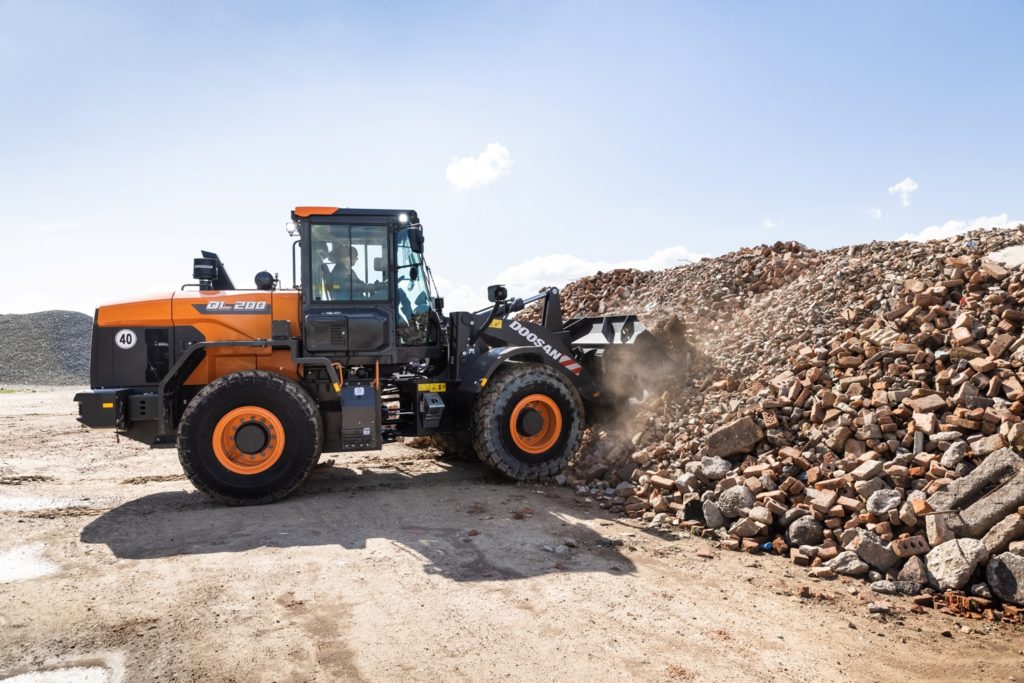DOOSAN has completed its DL-7 family of wheel loaders with the launch of the smallest model in the range.
The DL200-7 features a Perkins 1204J 4-cylinder Stage V engine with an output of 106 kW (144 HP) at 2200 RPM. The after-treatment system comprises a selective catalytic reduction module, an oxidation catalyst and a long-life particulate filter to reduce emissions.
The Doosan Smart Guidance System (DSGS) is a new feature, which analyses the driving habits and behaviour of the operator to help achieve the most fuel-efficient operation. The DSGS provides a score-graph of the operator’s driving pattern to show fuel economy, efficiency and durability.
Doosan explained that the new cab offers improved visibility, with blind spots ‘minimised’ and a 14% larger glass window area compared to the previous DL-5 model. The DL200-7 has the option of electrically adjustable rear view mirrors, while full LED working lights are installed.
Inside the cab, an ‘enhanced’ steering system and advanced electronic controls have been added. A Doosan Smart Key system allows operator to start the machine using a keyless device. A Grammer Actimo XXL seat with fully adjustable horizontal and vertical suspension settings is included, along with a pneumatic lumbar function and seat heating as standard.
The new EMCV (Electric Main Control Valve) joystick is fully integrated in the armrest, which Doosan revealed provides ‘smoother and precise’ controllability of the lift arm and attachments. Features available via the EMCV system include Automatic Return-to-Dig, Bucket Tilt Kick-out and the Bucket crowd stop position and shock prevention.
The DL200-7 wheel loader features an updated Hydrostatic Transmission (HST) and stronger Torque Proportional Differential (TPD) axles. The Hydrostatic Transmission is said to boost acceleration performance, while the HST unit provides four range steps to limit final speed, five different traction modes for all application challenges, and engine revs settings in combination with seven speed limits in first gear to ‘optimise’ hydraulic tool applications.











